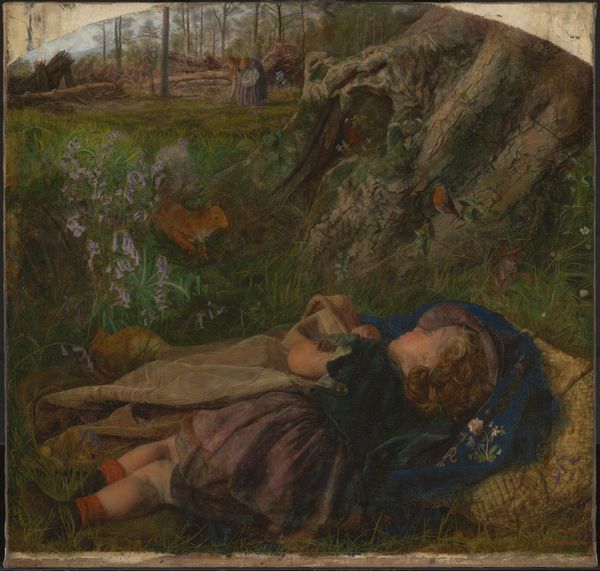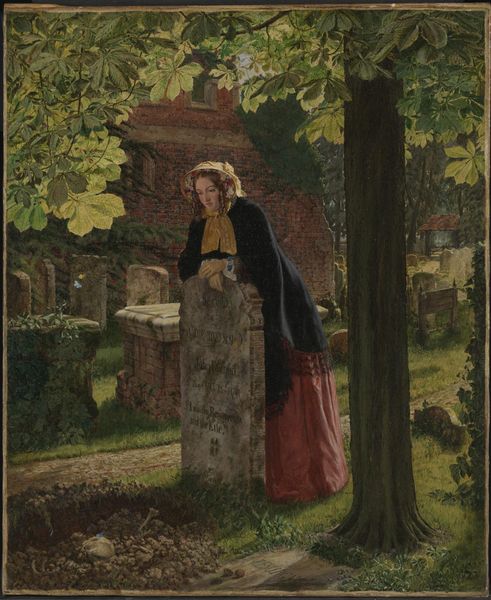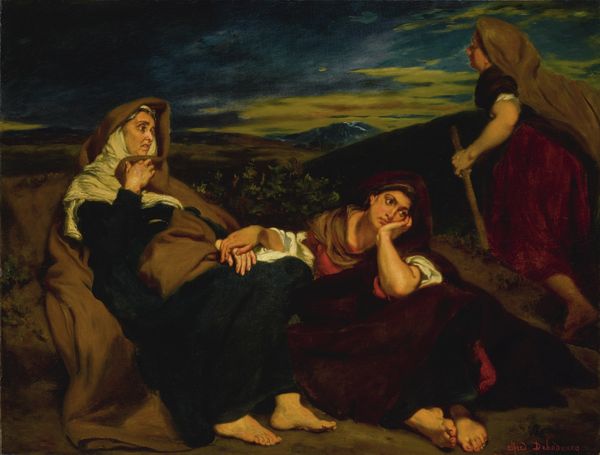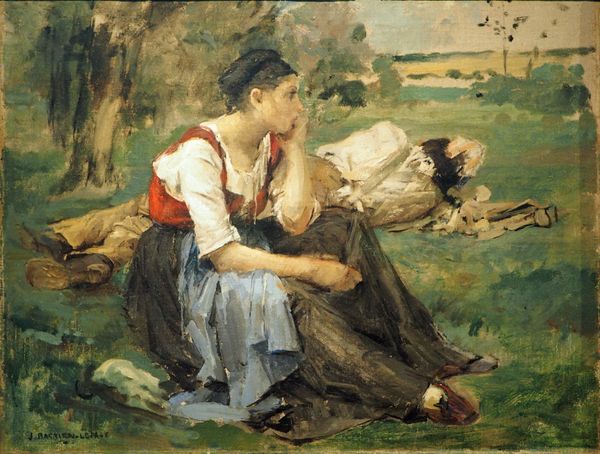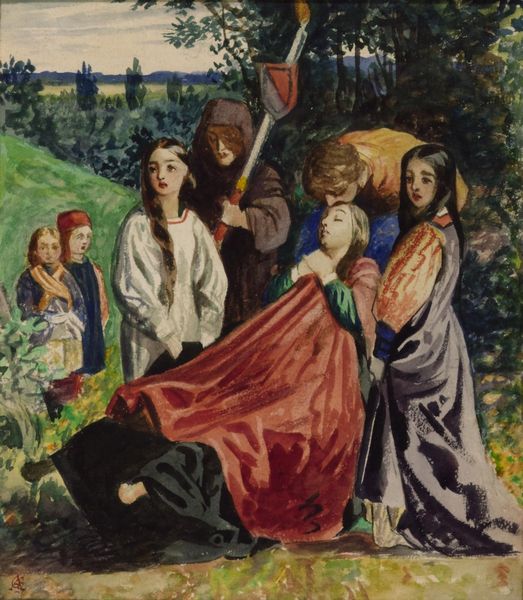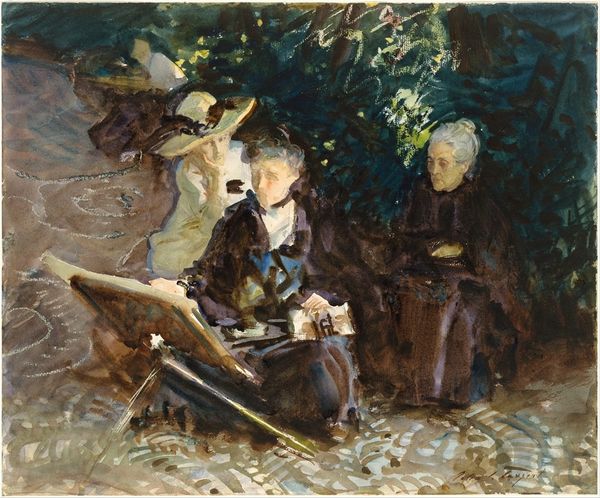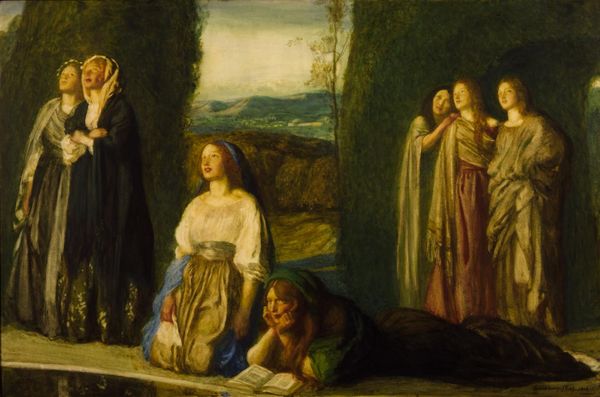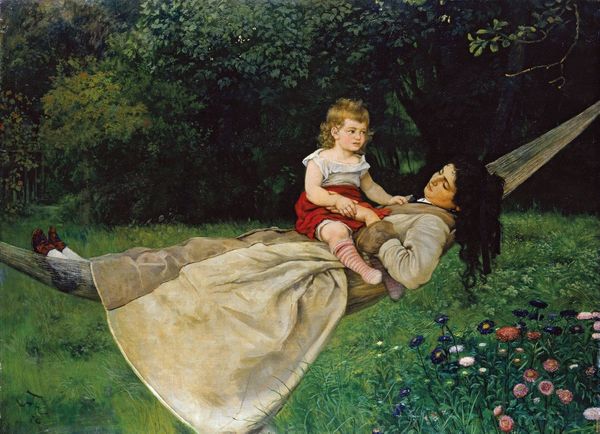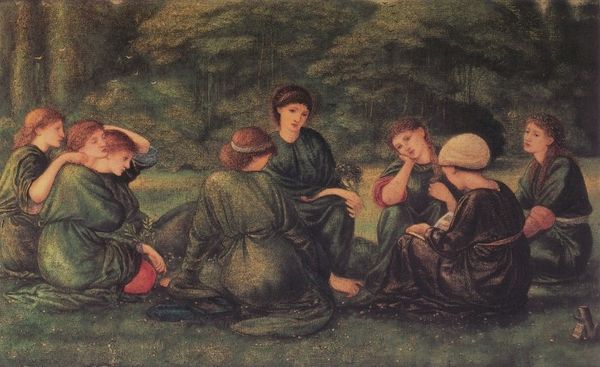
Dimensions: 51 x 65 cm
Copyright: Public domain
Curator: Welcome. We're standing before Arthur Hughes' "Home from the Sea," completed in 1862. What's your first impression? Editor: A somber tone strikes me first. Look at the figures--a boy lying face down on the ground beside a girl in what appears to be mourning garb. The setting near the church underscores that gravity. It's so heavy with grief; I wonder what choices in its material execution lend to this feeling. Curator: Indeed, there’s an undeniable feeling of loss, accentuated, I think, by Hughes’ deliberate placement of symbols. The churchyard, naturally, speaks of death and remembrance. Note too, the fallen petals scattered on the grass; symbols of lost innocence and fleeting beauty. Editor: And it's all rendered with incredible attention to texture. You can almost feel the weight of that coarse wool of their clothing or the dampness of the grass on skin. The means by which that realism is created really brings the scene to life, intensifying the subjects’ emotional states. I want to know how Hughes achieved this level of detail in his oil painting. Did he grind his pigments himself, engaging the Pre-Raphaelite interest in reclaiming some aspects of traditional artistic creation? Curator: Hughes, aligned with the Pre-Raphaelites, embraced a kind of symbolic realism. That careful attention to detail you mentioned was meant to reflect a deeper, spiritual truth. The boy in sailor's attire, for instance, likely represents a life lost at sea, a common tragedy in those days, which this churchyard setting may represent. The girl’s averted gaze reinforces the emotional distance and silent suffering that were associated with proper mourning during this period. It’s as if they are performing prescribed gendered grief roles in that moment. Editor: You bring up an important point about performance. This period emphasized displays of sentiment—often crafted through objects and adornment like mourning garb. Hughes capitalizes on visual material cues to enhance narratives about loss and gender roles within a growing manufacturing economy that supplied goods for public performances of mourning like those on display in "Home From the Sea". Curator: And such social customs find expression in artwork in fascinating ways, providing access into both private and shared meanings during a specific moment in time. I hadn't considered how integral material culture was to articulating identity back then. Editor: Exactly! Thinking about it now, perhaps understanding the means and social relationships of production of Hughes’ material helps unlock even deeper truths about the symbolic gravity he expresses on this canvas.
Comments
No comments
Be the first to comment and join the conversation on the ultimate creative platform.
